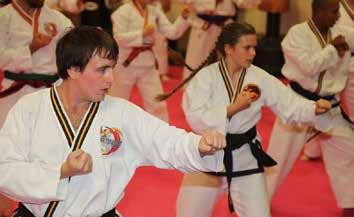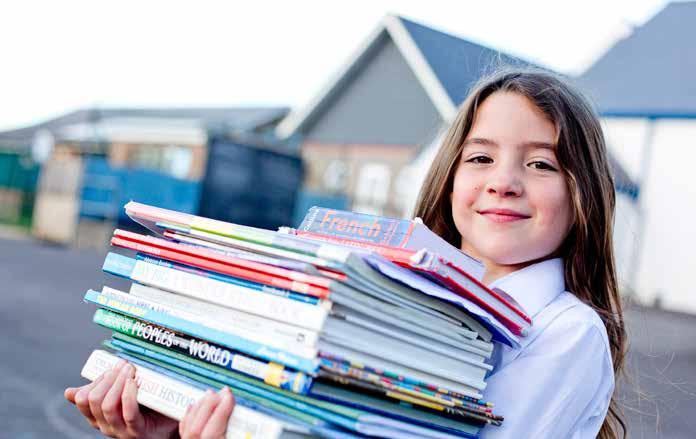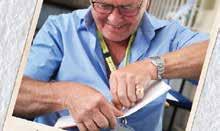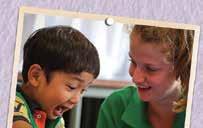
10 minute read
37 Martial Arts - The hidden benefits of this ancient art

Martial Arts is a fantastic pursuit for both adults and children. It is also well documented that Martial Arts has a positive effect on individuals suffering from the following challenges:
Advertisement
• Poor confidence and self esteem • Lack of fitness • Lack of social skill development • Poor mental well being • Obesity • Lack of motivation, drive and will power • Victim of mental or physical abuse • Illness and injury recovery and rehabilitation • Living with mental health conditions to include Dyslexia, Dyspraxia ADD, ADHD,Autism and Aspergers
Country Child speaks to two martial arts academies and discovers the many hidden benefits to learning these disciplined arts.
Mandi Miles of Shin Gi Tai Martial Arts Academy explains, "Martial arts classes are not about creating a mini Bruce Lee, they are about supporting children to become healthy, well rounded individuals with self-discipline and respect for others in a fun and supportive environment, while learning and developing the physical and intellectual skills involved. Common feedback is not that ‘Freddie’ can do a tremendous Kata or roundhouse kick, it is that ‘Freddie’ has increased in confidence or that ’Sarah’ has had a massive improvement with her behaviour. Martial Arts classes are not about creating fighters, they are about creating well rounded members of society who can defend themselves and others if need be. From families who want their child off the Xbox to those who regularly attend squad sessions and competitions, there is an ongoing enhancement to life that comes about as a result of taking part in Martial Arts classes. Classes for children of all ages (the grown-ups too) should be developed to bring out the best in each age group. ‘One size fits all’ doesn’t work in life or in martial arts. In a good club, younger children have structured sessions that develop core areas such as balance, coordination, discipline, fitness, team work, memory, focus and control. These are embedded within games and focussed activities and often give the children a take home thought, action or activity. Mat chats look at how to show manners, stay safe, help parents or be a good friend and activities can include things like creating a list of five good deeds you have done to share with the class. Successes will be celebrated and coaches should support positive development all while developing skills in Martial Arts. As children get older classes should meet age specific needs, develop core skills and work on building a ‘Black Belt Attitude’ both in and out of the dojo. It is fascinating how many positive comments are received from parents about how their child is the only one in their class who is carrying their own school bag instead of their parents or how their children have been praised at school for supporting other, less confident children as a result of conversations, activities and tasks in their Martial Arts class. Children grow and become more physically capable and health and fitness are further developed as children learn how to fine tune and enhance their motor skills whilst gaining understanding of their Martial Arts movements."
As Martial Arts coaches, on any given week we have the privilege of hearing the most exciting thing about a four-year-olds day, listening about university options or college timetables with teenagers, helping children and young adults with emotional issues. In any given day we have the chance to develop skills that far exceed those of kicking and punching. We have talks about manners, about supporting communities. We teach children how to stay safe, about stranger danger and give them techniques to deal with getting lost, being approached by strangers or how to effectively deal with the bully in the playground. We develop physical skills, social skills, discipline and confidence while ensuring our members have fun, make friends and develop physically, emotionally and socially. “ “
"Now at a deeper, technical level, training involves developing communication and group work skills, helping growth alongside friends and developing emotional and social skills that will stand them in good stead for the upcoming preteen and teenage years. Key areas for development at this age should include: agility, technique, courage, intensity, flexibility, perseverance, speed, concentration, stamina and self-confidence and coaches should be working with children to foster good manners, correct etiquette, team working and a strong work ethic, as well as working with them on antibullying and self-protection on both physical and emotional levels. Older children work on more physically challenging Martial
Natalie Bryden from Martial Art World adds "Martial Art classes for children are a great way to build up fitness, strength, and stamina. They also promote discipline, confidence, and improved concentration; contributing hugely to a child’s ability to focus in school and socialise with not just their peers but all age groups. Martial Arts also emphasise the importance of perseverance and a non-quitting attitude. It’s essential for children to see how important it is to never to give up, even when things might be tough. Martial arts provide training for both the mind AND the body. For Martial Art World’s juniors, the gradings are a great way to improve performance with school examinations. As they become successful after grading for their new belts, they then gain higher selfArts whilst moving up the grading system. Coaching and welfare teams should have an open-door policy for anyone who needs support in a safe environment to discuss worries and needs. Teenagers are difficult to engage, especially with access to handheld or console devices but with Martial Arts teenagers have fun and use their bodies. Good classes are designed as innovative, friendly, lively and challenging, offering a wide range of skills from punching to flying kicks. Alongside the skills being developed socially and emotionally, there should now be more in-depth knowledge about their art and more concentrated training needed while working towards a first Black Belt. The support for students trying to achieve their black belt from coaches and peers should be second to none. Much greater physical and technical knowledge is needed now. As the growing physical skills required increase so should the knowledge on aspects such as: nutrition, skill acquisition, physiology, strength and conditioning and how to deal with stress and anxiety. Good Martial Arts classes deal with bullying, emotion management and mental health. Any good Martial Arts club teaches kicking and punching but they also help support healthy development in young people on physical, intellectual, social and emotional levels. Classes should be fun and engaging and give children a chance to grow, develop and achieve in a safe and supportive environment." basingstokekarate.com
“esteem and become more comfortable and confident within a pressured environment. It also provides them with selfbelief, firmly instilling the idea that they can achieve most things that they put their mind to, and that hard work always brings a harvest of rewards. Confident children become magnets for their peers, attracting better friends as they become more popular. For adults, this can translate into work promotions, enhanced team ethics or better group affinity with peer groups. This is because all students become conditioned to regular testing. They become more confident in their own ability to learn and step outside their comfort zone to be tested, and to be accepted within their “own society”. In addition, they realise that they can face their fears and overcome them, which in turn will provide huge benefits in all other areas of their lives." martialartoworld.com Martial Art World prides itself on the fact that it offers all of its students and their families a complete mental health and fitness solution. MAW recognises that the student lies at the heart of everything that we offer and do. Many families and individuals continue their journey with us to black belt and beyond, with a number of students that have been training with us for over two decades. We have professional male and female instructors and onsite qualified examiners which make MAW unique in its outlook to our local community. “


Help...Homework!

Is homework a help or a hindrance? Primary school teacher Aimee Strongman explains... H omework or home learning is always a topic for discussion between schools and parents. Schools want parents to do more to support their children at home following on from the day or week’s learning, and the parents usually think that there is too much homework to be done. So, is there a balance to be had? Are schools giving children too much work to take home or are parents too busy? According to the international Organisation for Economic Cooperation and Development (OECD) and various education research partners, 15-year-olds in Shanghai spend the most amount of time on homework, working on average 13.8 hours a week. Students in Finland spend just 2.8 hours on homework per week, but still mange to perform well on academic tests, despite the correlation between success and time spent on homework. While there is no such formal evidence to prove the benefits of homework, there are certainly some arguments for it. Home learning does allow students and teachers to work more closely together. They can discuss their assignments or any problems they may have with their teacher or classmates, which in turn encourages discussion about learning as well as building on independence and resilience Homework can also bring families closer together by allocating time that could otherwise not exist in a busy household or with working parents. It provides a dedicated time to learn and allows for communications to be had as well as allowing parents to be present in their learning and see what topics are being studied within the classroom. The action of completing homework allows topics covered in class to be revisited, therefore building on prior knowledge and reaffirming the child’s understanding. However, this all depends on the homelife a child has and indeed whether they have a supportive family. For older children, home-learning can also help harness a sense of responsibility and skills such as working towards deadlines needed for later in their academic journey. It offers independence and a chance to share their research, information and understanding with their peers and tutors, making it part of a more holistic approach to teaching and learning. The pressure on children today is heavy and the prospect of young children having to complete homework every night is quite daunting not to mention difficult when trying to fit it in between sports practice and dinner. Children also need their rest, and this is needed to refresh not only their minds but bodies too; a time for mindfulness and space away from the hubbub of school and timetabled routine. The other thing to take into consideration is that time spent working at a desk greatly reduces the amount of time that children could be spending with their families. It is important in our digital age that ‘family time’ be an imperative activity for children growing up. Too much time focussed on work can cause conflict between parents and their offspring, causing a battle of wills and resistance from both parties, which is not conducive to forming a positive light on learning. There can be too much work and pressure put on students, which can lead to cheating as they attempt to complete assignments by any means possible, including copying from other students. There is no benefit to this, and the aim of homework has been lost. Teachers can struggle to find time to mark assignments and deliver feedback in a constructive and effective way due to the pressures of the working day and they are simply not given the time, so when feedback is finally received it could be out of date as the topic could have finished. Ultimately, if homework is to work in a way that is intended to support a child’s learning, schools need to readdress how they talk about it not only with the students but with parents as well.
12 July to 8 August 2020




From Creative Arts to Science, History and Culture to Life Skills and Wellbeing, Summer School offers learning experiences and entertainment for all ages.

ARE YOUR RETIREMENT PLANS ON COURSE? Contact us for a pension review.

40 PETER HARDING WEALTH MANAGEMENT Principal Partner Practice of St. James’s Place Wealth Management
30 Haven Road, Canford Cliffs, Dorset BH13 7LP Tel: 01202 830730 40 High Street, Shaftesbury, Dorset SP7 8JG Tel: 01747 855554 9 Cheap Street, Sherborne, Dorset DT9 3PU Tel: 01935 315315
Email: peterhardingwm@sjpp.co.uk Web: www.peterhardingwm.co.uk





